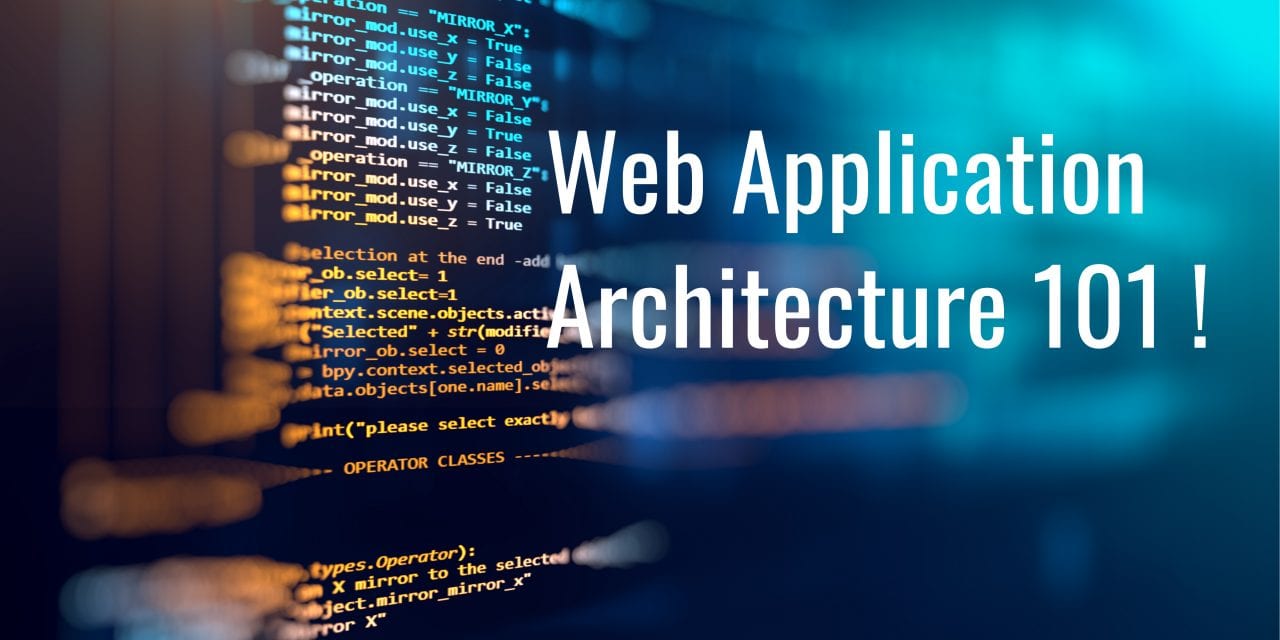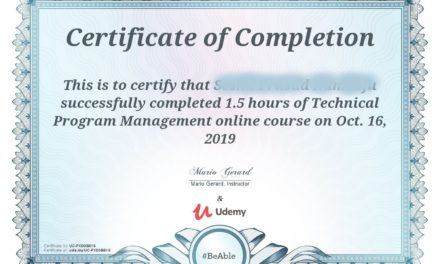Last updated on May 4th, 2022 at 06:03 am
Web Application Architecture 101:
Review & 10% Coupon Code
Review & Coupon Code for Web Application & Software Architecture 101!

The “Web Application & Software Architecture” course on educative is a great course for beginners. It’s one of those fundamental courses that will help you understand System architecture and design. It really covers a variety of topics Tiered Applications, Scalability, High Availability, Databases, Caching, Message Queues, Stream Processing and more.
For anyone looking to join a tech organization like Facebook, Amazon, Netflix, Google this would be a good primer before you do the Grokking the system design course.
Every full loop interview at all the tech organizations now has at least have one System Design round and thats where ‘Web Application & Software Architecture’ comes in handy. For those of you who are on the fence on making the decision if it is worth your time and money go on and read my detailed review of the course.
Long Story Short: It is a great buy for beginners who are new to distributed system architecture !
Web Application & Software Architecture Discount Coupon Code
If you have already made up your mind here is the 10% discount code/coupon for your purchase. Use “mg-architecture-10” at the time of check out OR Click to get your 10% discount to the “Web Application & Software Architecture” course.
Web Application & Software Architecture 101: Review
To start the course has over 100’s of likes form users and is very popular in general. Over time the author Shivang has consistently updated the material with new material.
The course currently has 12 chapters:-
- Introduction
- Different Tiers in Software Architecture
- Web architecture
- Scalability
- High Availability
- Monolithic & Micro-services
- Databases
- Caching
- Message Queues
- Stream Processing
- More on Architecture
- Picking the Right Technology
- Case Studies
I will be reviewing each of these sections and also be providing some additional information when needed. I start with the “Glossary of System Design Basics” first as I believe that the user should be reading those BEFORE going over the actual designs. Without a solid understanding of the building blocks, it is going to be hard to understand the designs.
Ch1-Introduction
An overview of what this course covers and who the audience is. It calls out that you will “learn about various architectural styles such as the client-server, peer to peer decentralized architecture, microservices, the fundamentals of data flow in a web application, different layers involved, concepts like scalability, high availability & much more.”
It also goes into the more important part of why getting the software architecture right the first time around is so important and often neglected.
Ch2 - Different Tiers in Software Architecture
What is covered :The author covers Single Tier Applications, Two Tier Applications, Three Tier Applications, N Tier Applications and also has a quiz at the vey end.
Review: I love this chapter ! The beauty of this chapter is that the author covers the WHY of each type of application and the core differences and drawbacks of each of the approaches. It makes a good and easy read to understand why we are where we are from an evolution of system design point of view.
Ch3 - Web architecture
What is Covered: Fundamentals of web architecture, Client Server Architecture, Types of clients, Communication between Clients, REST APIs and PUSH and PULL Mechanisms.
Review: Good overview of the client server architecture. Its covers the basic HTTP protocols and polling. This is a good chapter overall with the current up tick in most modern applications using messaging and notifications this is a good chapter to read.
Ch4 - Scalability
What is Covered: Overview of scaling, understanding the right approach wile you design your application, understanding the bottlenecks and how you would go about improving your application from a scalability stand point.
Review: Its overall a decent coverage on vertical, horizontal and cloud scaling and where you would use each of them. It goes a little into CDN and databases but a little light on the details. Would have liked it to me more informative.
Ch5 - High Availability
What is covered: High Availability for those of you who are not familiar HA is the ability of the system to stay online despite having failures at the infrastructural level in real-time. The chapter goes into Fault Tolerance, Redundancy, Replication and Clustering.
Review: Its a good overview into why HA is key ! And why designing applications keeping this in mind is important. Its a decent primer overall.
Ch6 - Monolithic & Microservices
What is Covered: What is a monolithic application ? How it differs from modern micro-service applications.
Review: Decent coverage around the drawbacks of monolithic applications and why we have moved to a more microservice-based approach.
Ch7 - Databases
What is Covered: Types of DBs, relational vs NoSQL, Polyglot persistence, CAP Theorem. Several NoSQL DBs covered.
Review: Probably one of the more in-depth chapters in the entire course. Databases are very well covered. Lots of good information, I like it that the author discusses use cases and not just what each db does. Enjoyed the coverage on eventual consistency and the CAP theorem they are very well explained.
Recommended Reading : No SQL distilled by Martin Fowler.
Ch8 - Caching
What is Covered: WHY you need caching, Reducing the application costs by using caching and finally caching strategies.
Review: Interesting take on why caching is needed as well as the point on reducing the cost of running applications by using caching. The author needs to add more information on the various technologies that are used to cache. this chapter as it stands is a little light on the details.
Advanced reading: The Art of Scalability.
Ch9 - Message Queues
What is Covered: Various types of messaging queues and messaging models and their use cases.
Review: I really loved the coverage around the notification systems and the way the author talks about redundancy and message failure and offline messaging use-cases. though its a little light on details its a great primer on how messaging queues should be used.
Ch10 - Stream Processing
What is Covered: Data ingestion, Use-cases of data ingestion, how queues can be used for data ingestion, Pipelines, Lambda and Kappa Architecture.
Review: I loved this chapter it has a very profound take on Data ingestion and the various layers of data processing. I truly believe this is a great read. Taking about each of the layers and their uses is super cool.
Ch11 - More on Architecture
What is covered: Event driven Architecture, Federated Architecture, Shared noting architecture, etc.
Review: One of the more interesting chapters for sure. Amazing take on event driven architecture, webhooks, hexagonal architecture and peer to peer architecture.
Ch12 - Picking The Right Technology
What is covered : Real-time Data Interaction, Peer to Peer Web Application, CRUD-based Regular Application, Simple Small Scale Applications, CPU & Memory Intensive Applications
Review: neat examples of where each type of application would be used. Felt the heading here were a little misleading.
Ch13 - Case Studies
What is covered: two case studies a) Google Maps b) Ticking application.
“
Overall “Web Application & Software Architecture” provides a great primer for individuals to learn the core concepts of web applications”.
In my opinion, it’s a great intro to Web Application & Software Architecture if you are new to and have not worked on architecting distributed systems. I would recommend further reading or watch more youtube videos to get yourself a solid understanding of these topics.
If you are short of time, this is an excellent primer or a starting point !

Mario Gerard



















Thanks for putting this together Mario !